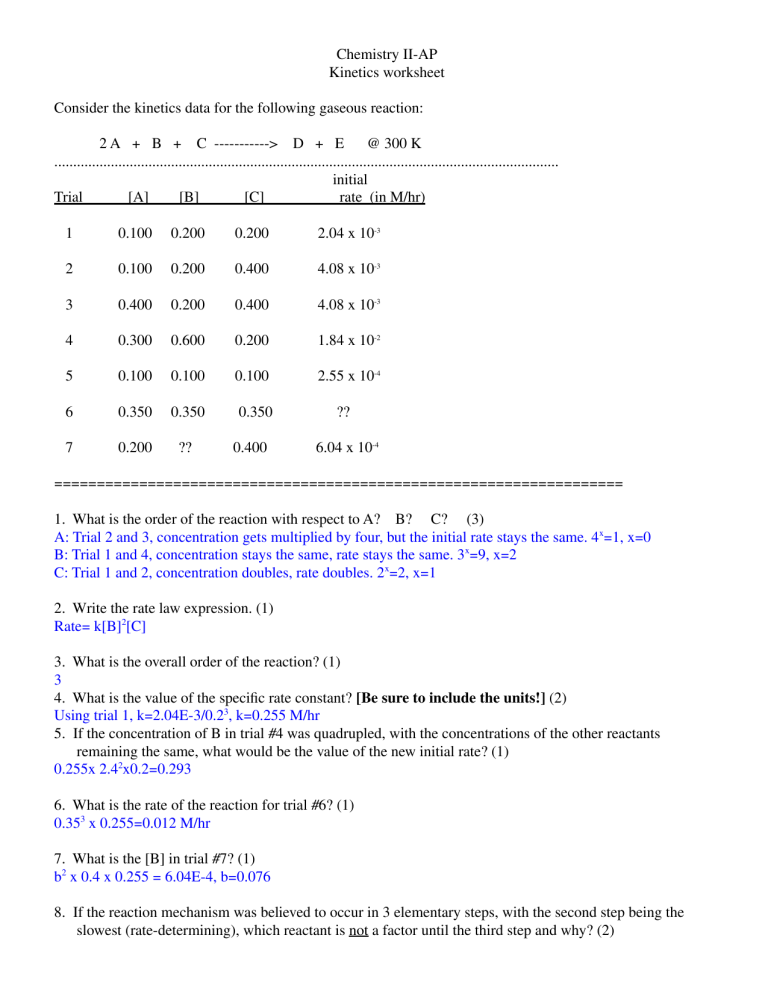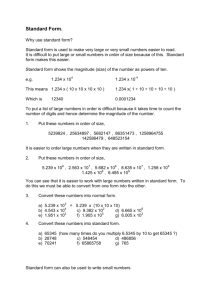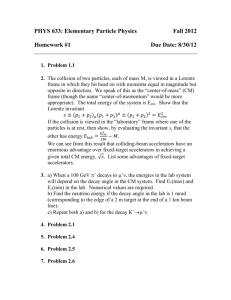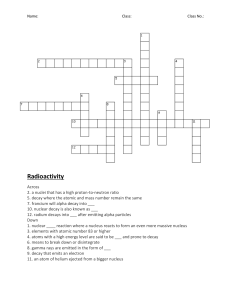
Chemistry II-AP Kinetics worksheet Consider the kinetics data for the following gaseous reaction: 2 A + B + C -----------> D + E @ 300 K ...................................................................................................................................... initial Trial [A] [B] [C] rate (in M/hr) 1 0.100 0.200 0.200 2.04 x 10-3 2 0.100 0.200 0.400 4.08 x 10-3 3 0.400 0.200 0.400 4.08 x 10-3 4 0.300 0.600 0.200 1.84 x 10-2 5 0.100 0.100 0.100 2.55 x 10-4 6 0.350 0.350 0.350 7 0.200 ?? 0.400 ?? 6.04 x 10-4 =================================================================== 1. What is the order of the reaction with respect to A? B? C? (3) A: Trial 2 and 3, concentration gets multiplied by four, but the initial rate stays the same. 4x=1, x=0 B: Trial 1 and 4, concentration stays the same, rate stays the same. 3x=9, x=2 C: Trial 1 and 2, concentration doubles, rate doubles. 2x=2, x=1 2. Write the rate law expression. (1) Rate= k[B]2[C] 3. What is the overall order of the reaction? (1) 3 4. What is the value of the specific rate constant? [Be sure to include the units!] (2) Using trial 1, k=2.04E-3/0.23, k=0.255 M/hr 5. If the concentration of B in trial #4 was quadrupled, with the concentrations of the other reactants remaining the same, what would be the value of the new initial rate? (1) 0.255x 2.42x0.2=0.293 6. What is the rate of the reaction for trial #6? (1) 0.353 x 0.255=0.012 M/hr 7. What is the [B] in trial #7? (1) b2 x 0.4 x 0.255 = 6.04E-4, b=0.076 8. If the reaction mechanism was believed to occur in 3 elementary steps, with the second step being the slowest (rate-determining), which reactant is not a factor until the third step and why? (2) A, this is because a is of the zeroth order so it is not a part of the reaction until the third step -29. How many hours would it take for a 6.000-gram sample of Rn-230 to decay so that only 0.750 grams of Rn-230 remains? The half-life of Rn-230 is 48.6 hours for this first-order decay reaction. (2) - 3 half lives (6, 3, 1.5, 0.75) 3(48.6)=145.8 hours 10. What is the value of the decay rate constant (k) in problem #9? (1) - k = ln(2) / t1/2 = 0.693 / 48.6 hrs = 0.0143 hours 11. Using the information from problems #9 and #10, how many hours will it take for a 10.00-gram sample to decay so that only 3.23 grams remains? (1) - (ln(10/3.23))/0.0143 = 79 hours 12. The reaction: R + 2 S -------> T + V occurs in a single step. What is the overall order of the reaction? Why is this most improbable? For a collision to be considered to be “effective”, what two criteria must be met? (4) - The order of the reaction is 3rd order. It isn’t probable because for a collision to be deemed effective it has to collide in a specific direction at a specific angle and there needs to be enough energy in the collision to break and form new bonds. .......................................................................... Consider the following reaction and its theoretical mechanism steps: D + 2 E + F ---------------> G + 2 H Ni Step 1: Step 2: Step 3: D + Ni ------------> X X + E + F ----------> R + 2 H + Ni R + E ------------> G 13. Which step is the rate-determining step? (1) Step 2 14. What is the overall order of the reaction? (1) 2nd order 15. What is the catalyst? (1) Ni 16. What is/are the intermediate(s)? (1) X, R fast slow moderate









